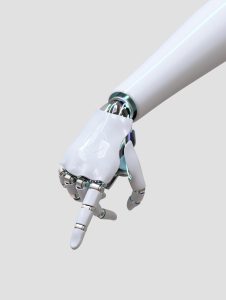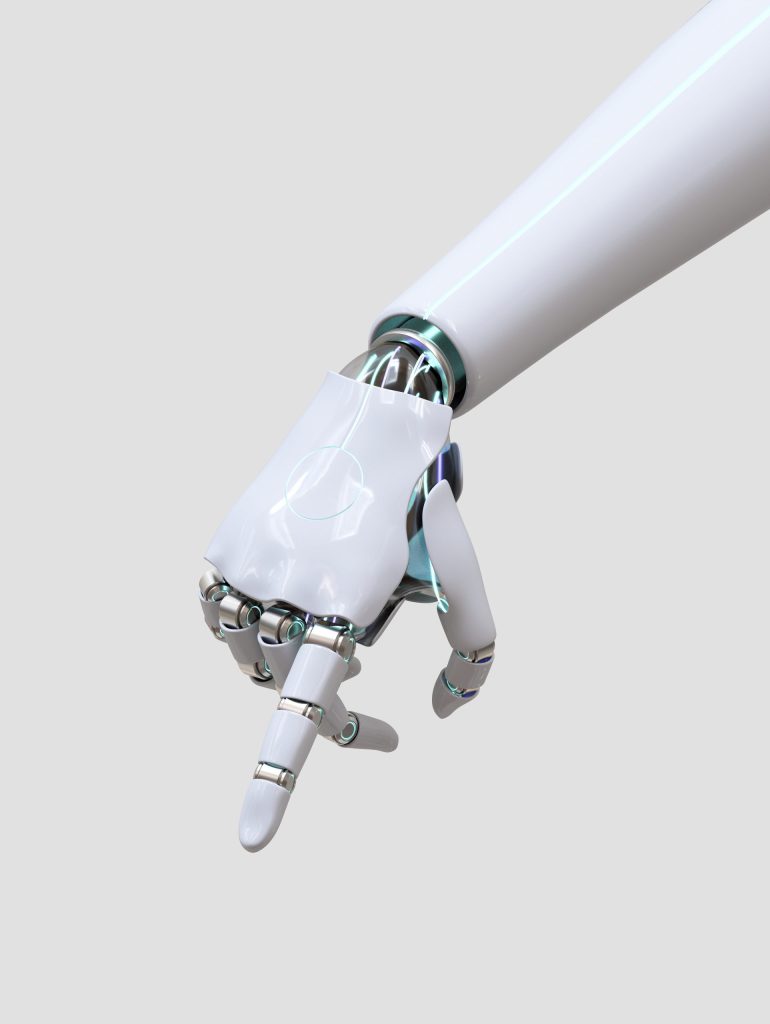AI copywriting, also known as AI content writing or machine learning-assisted content creation, is an emerging technology that’s taking traditional copywriting to an entirely new level. It’s a quickly developing field that has exciting potential for professional bloggers, marketers, and other online professionals to reach their target audiences with more impactful and engaging content than ever before.
The premise of AI copywriting is simple: using advanced algorithms and powerful computer processing power, AI-driven applications can generate high-quality text in response to specific prompts or tasks. Using a range of sophisticated models and techniques like natural language processing (NLP) and sentiment analysis, these applications are able to understand complex user queries and create relevant responses in record time. This kind of smart technology can be used to automatically personalize website content based on customer preferences or automate customer service interactions naturally.
In terms of marketing and blogging, AI copywriting technology can be used to create compelling blog posts, web page descriptions, ads, press releases, email campaigns – virtually anything involving written text. As well as being incredibly accurate with its word choices and syntax formation (unlike human writers who are prone to typos!) it makes the process much more efficient. Additionally, software scientists have created databases full of compelling topics almost guaranteed to capture readers’ attention when fed into the AI system. This means bloggers don’t have to spend hours racking their brains for ideas; the ideas come directly from machine learning, which learns from its environment on a daily basis!
Though it might seem intimidating at first glance due to its complexity – think again! Businesses small and large can use this amazing tool without having in-depth technical knowledge or vast budgets. The main thing is knowing what you want your final article or piece of content to entail so that you can input the right data into the technology! Thanks to advances in artificial intelligence computing power over past years this task has become increasingly accessible even for human writers with no knowledge of programming.
Using AI copywriter tools correctly empowers businesses with faster turnaround times on projects while ensuring quality output every single time! In a world where getting value out of our content is challenging because there are so many global competitors, this tool has become integral for anyone serious about dominating their niche and wanting top results from their editorial teams! Nowadays it’s all about speed — out with pencil and paper editing — we’re going full digital here folks!
Unleashing the Power of AI in Content Creation

What is AI Copywriting?
AI copywriting is a revolutionary use of artificial intelligence in content creation. It allows for machines to be trained on data and create unique, engaging, and impactful individual pieces of content that are tailored to the specifics of their task. This process not only speeds up the production of content but also enhances its quality due to the data-driven decisions that are made when creating it.
 The Revolution of AI in Content Creation
The Revolution of AI in Content Creation
The use of AI in content creation is an exciting development with huge potential. With machine learning models being trained via large datasets, they become capable of generating creative content that can outperform human writing by far. By offering unprecedented speed and accuracy, AI copywriting brings a wealth of advantages such as less time spent on creative processes and more resources available for distribution or analysis.
Exploring the Possibilities of AI-Driven Content Generation
AI-driven content generation provides an opportunity to unlock new insights into how users interact with different types of content by analysing their preferences and history on the web, empowering marketers with data-driven decision-making capabilities. Frase is an artificial intelligence tool which uses artificial intelligence and big data to give content writers the opportunity to craft the perfect content for readers and search engines. Furthermore, combining multiple models together can create sophisticated copies personalized for each user based on their interests or profile information given, ultimately providing them with a more effective user experience.
The Magic of NLP in AI Copywriting
 What is NLP?
What is NLP?
NLP (Natural Language Processing) is a subfield of AI that studies how computers can understand and interact with human language. It combines linguistics, computer science and machine learning to analyse large amounts of natural language data. With NLP, machines are able to interpret the meaning behind words and phrases, as well as recognize patterns in user behaviour. This enables them to better understand conversations and extract insights from vast amounts of text data.
How Does NLP Improve Content?
NLP can be used to optimize and improve content for websites, social media posts, blogs, digital ads, emails, chatbots and more. By extracting key concepts from customer conversations or content produced by digital marketers, the technology captures underlying user intent to create more personalized content. For example, NLP can be used to better  target customers using relevant keywords in content titles or meta descriptions that capture their attention and guide them to the desired page or product more effectively than generic terms. In addition, using sentiment analysis techniques powered by Natural Language Processing algorithms allows for insights into what consumers actually care about and removes bias from manual decisions regarding the material being written. As a result, businesses gain access to accurate data-driven information faster than ever before. Which guides optimization efforts in an automated way, improving overall speed and results accuracy compared to previous text-manipulating approaches.
target customers using relevant keywords in content titles or meta descriptions that capture their attention and guide them to the desired page or product more effectively than generic terms. In addition, using sentiment analysis techniques powered by Natural Language Processing algorithms allows for insights into what consumers actually care about and removes bias from manual decisions regarding the material being written. As a result, businesses gain access to accurate data-driven information faster than ever before. Which guides optimization efforts in an automated way, improving overall speed and results accuracy compared to previous text-manipulating approaches.
The Science Behind Natural Language Processing:
At its core, NLP relies on artificial neural networks, which are computers capable of “learning” through experience like humans do — as opposed to traditional programming methods where software engineers have control over every aspect of the program’s functioning by manually coding each step. Neural networks imitate the human brain by processing information at lightning speed while recognizing patterns they come across – such as trends in customer behaviour when interacting with content created through NLP — this enables natural language technologies like speech recognition applications, virtual assistants etc. And even chatbots reach higher levels of sophistication. As the neural network receives more data, it continues fine-tuning its parameters for improved performance over time, thus gradually growing smarter without any explicit programming.
The Future of Editing: Automated Copyediting
 What Is Automated Copyediting?
What Is Automated Copyediting?
Automated Copyediting is a technology-driven approach to editing that uses advanced artificial intelligence (AI) programs and automated processing to evaluate the quality, accuracy, and readability of writing. By automatically checking the syntax, grammar, spelling, style, and other aspects of text-based content, automated Copyediting machines help eliminate costly errors and make editing more efficient. Linguix is one Copyediting tool which uses AI to proofread and provide suggestions to improve your writing.
The Benefits of a Syntax-Savvy AI
A Syntax-savvy AI can recognize context errors such as subject/verb agreement or correct word usage by applying an understanding of natural language structure. With automated Copyediting systems powered by AI technologies like Linguix, writers can have peace of mind knowing that their work will be properly grasped by the tech. This syntax-savvy AI also allows for more precise editing in terms of reducing typos and quickly identifying common grammar mistakes with ease.
 Elevating Your Readability with Automated Enhancement
Elevating Your Readability with Automated Enhancement
By utilizing automated enhancement tools when engaging in the process of automated Copyediting, writers can further boost their readability score. A readability score is an indicator used to measure the comprehension level required for text to be easily understood by readers; it helps identify unreadable parts of an article or paper thereby allowing people to increase their engagement level with readers through shorter sentences and improved language complexity. Automatically generated enhancements then seek out repetitive words and structures, resulting in higher scoring contexts and greater readability.
Say Goodbye To Typos And Hello To Perfect Prose!
Thanks to powerful algorithms implemented at the backend behind automated Copyediting systems typos are easily caught even if it is a name being misspelled or any kind of persistent grammatical error occurring throughout writing pieces ensuring type mistakes stand no chance without adding extra time manually attempting them. Whether you want better content for SEO purposes or elevated readability scores for general purposes, automated copywriting tools can produce perfect results accurately from beginning till end saving you from stress-related headaches in return leading your words and prose straight into Professional Perfection!
Maintaining the Human Touch in AI-Assisted Writing
 Keeping the Human Touch with a Natural Writing Style
Keeping the Human Touch with a Natural Writing Style
Natural writing style is a key component of user experience and helps create an emotional connection between writer and reader. It’s important to maintain this human touch even when using AI-assisted tools like ChatGPT. While artificial intelligence techniques can automate various aspects of text processing, the human element should not be underestimated in the production of powerful content.
Harnessing the Power of Neural Network Programming
Neural network programming is a powerful way to harness artificial intelligence for language understanding and can be used to detect patterns in text that might otherwise go unnoticed. By training these systems on natural text, we can gain deeper insights into how our readers perceive certain words or ideas, allowing writers to craft more engaging content with greater accuracy.

Creating a Conceptual Representation of Your Ideas
Using concept mapping tools such as Frase.io‘s Wikipedia Concept Map (read my Frase AI review to learn about this amazing SEO tool!) helps writers create a more intelligible representation of their thoughts on paper. This visual aid allows writers to see the connections between their ideas, so they can easily identify gaps in their knowledge, further refine their potential topics or even update old content pieces that they feel need improvement. In addition to being helpful when outlining your written work, conceptual maps can also be used during editing and revision processes to help ensure that your article remains organized and clear.
Maintaining a Natural Writing Style with AI
AI-assisted writing tools have made it possible for natural language processing experts and linguists alike to design better automated writing assistants that can help writers write more effectively with less effort. These tools are designed not just for providing grammar advice but also for enabling smoother workflows and ensuring that the flow of content remains consistent from one paragraph to another. By combining natural language processing algorithms with natural writing styles, editors can ensure that every piece they produce meets their standards while still maintaining its original flair.
AI Copywriting – The Building Blocks For Success
 What is the Secret to Success with AI Copywriting?
What is the Secret to Success with AI Copywriting?
The secret to success with AI copywriting lies in accurately targeting your audience and having a clear understanding of what you want your brand voice to be. By leveraging advancements in AI technology, you can maximize the potential of copywriting, creating content that speaks directly to your target demographic and aligns with your vision for the brand.
Targeting Your Audience with Precision:
AI copywriting allows you to tailor content specifically to the needs of your audience. Through data analysis, you can identify areas where readers prefer certain words or topics over others; this way, any content produced using these insights is more likely to resonate with them. Moreover, by using natural language processing methods such as word embedding, you can efficiently generate relevant sentences and phrases that echo reader preferences without sacrificing the integrity of existing content pieces.

Defining Your Brand Voice with Clarity
Although it may be tempting to try and push out generic content through powerful AI tools, ultimately that won’t lead anywhere – not sustaining your position within popular search engine result pages nor increasing overall brand recognition. Instead, it’s important that you establish a consistent brand voice for all your written responses; this way users will become familiar not only with tone but also a stylistic coherence that stands out from competitors’ responses. The prompt engineering tool Riku can help you craft prompts using your own writing style, allowing your AI writing to have an original flair which stands out above your competitors.
Staying Ahead of the Game with Advancements in AI Technology
It goes without saying that if you plan on activating automated content writing platforms powered by artificial intelligence engines, then staying up-to-date is essential. Not only must there be regular updates ensuring accuracy across different subjects but also instant access to breaking news items and stories related to both current affairs and marketplace developments affecting specific industries using copywriting services en masse. Keeping up with trending topics additionally helps funnel user interest towards particular channels or websites – increasing traffic while helping shape user opinion into responding favourably towards products or services.
AI Copywriting: A Recap
What is The Future of AI Copywriting?
The future of AI copywriting consists of machines taking over and replacing existing human copywriters. The potential for more efficient and successful content can be reached by using the advanced capabilities of Artificial Intelligence in the writing process. As machine learning and natural language processing continue to advance, so too does their potential in content creation. Some of the most exciting applications for this technology are related to tasks that would traditionally require long hours and unwieldy manual labour from people.
Key Takeaways from this Journey
One key takeaway from this journey is that AI copywriting has great potential in terms of efficiency, accuracy, and precision when it comes to content creation. By being able to accurately mimic existing style preferences, identify context-related facts, and generate more complex topics with higher chances of success than can be achieved manually, AI definitely presents as a powerful partner in writing projects.
The Potential of AI in Content Creation
AI can help create unique pieces with automatic personalization features, sophisticated formatting requirements limited only by imagination, and audience targeting capabilities far beyond reach if relying on humans solely. There are many tasks which might take humans hours, if not days, which could be done immediately, and more effectively, by an AI system designed to look for patterns in big data. For example, pricing a product or service tailored for specific customers or generating different types of emails based on customer interest categories from a large email database.
Final Thoughts on Embracing the Power of AI in Your Writing
As we move closer to welcoming automated technology into our lives for improved convenience and productivity, it’s hard not to think about how AI copywriting will impact us all once fully integrated into our daily routines. While there may be plenty of concerns around accuracy or proficiency when it comes to letting machines write content instead of people, embracing its potential power should not be mistaken for laziness – but rather as an act driven by risk management instincts as well as optimism about the new opportunities that AI will bring.
